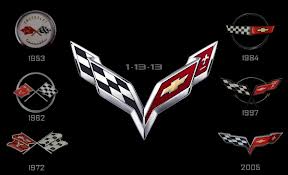My Generation: The King Is Dead, Long Live the King
My Generation: The King Is Dead, Long Live the King
My Generation: The King Is Dead, Long Live the King

The King Is Dead, Long Live the King
by Rick Tavel Ⓒ 1-3-2012 All rights reserved. Do not use without expressed written consent.
There’s more than a few “Corvetters” over the top with excitement about 1-13-13. I admit that I am one of them. I mean, really, what do you expect? We’ve been conditioned over six generations for what will be revealed on Sunday evening in Detroit. It will be, if not breathtaking, at least the very best of sixty one years of the finest performance car
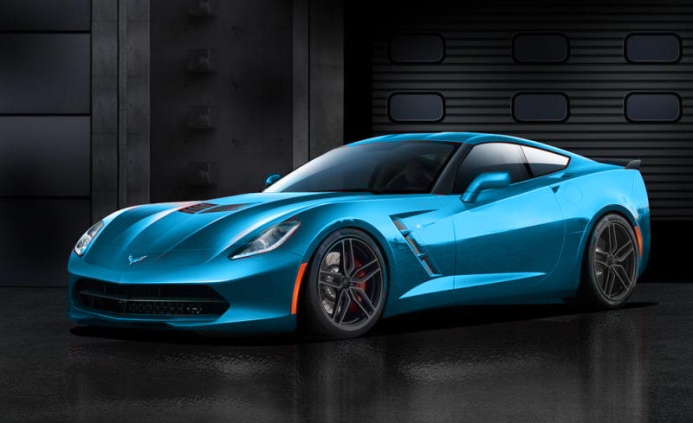 Rendition of C7 (Source: CorvetteBlogger)
Rendition of C7 (Source: CorvetteBlogger)produced in the United States. We will be bidding farewell to the C6, the finest of all generations of Corvette to date. Like the Corvettes of every generation they served us well as examples of America’s sports car. As we ready to welcome the C7, we read the results of the C6 taking the new Viper to task, on the track, the dyno, and the latest test, ‘burnouts’. Let me be clear, I’m not pushing the C6 out the door, I love my C6, the styling and the performance. But one of the reasons the Corvette has remained the King for over six decades is the never-ending mission of the engineers and designers at GM to improve it. And so it is with the C6, as good as it is it’s time to move on. It’s time to hail the new legacy, the heir to the throne which we will meet in only a few days.
I know some of you may not be able to remember the introduction of the second generation of Corvettes, but I do. When we were young, who among us did not stare, awestruck, the first time we laid eyes on the first Corvette of a new generation?
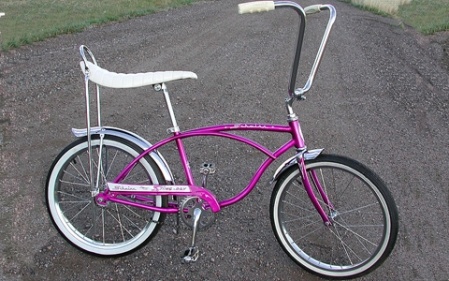 Schwinn 1963 Stingray Bicycle
Schwinn 1963 Stingray BicycleIf you were like most, the unveiling of a new generation of Corvette completely captured our attention and our hearts. It was an instant icon for almost every young boy whose dream would be to someday be able to own one. Even Schwinn recognized the iconic status the car and manufactured a “Corvette” model bicycle from 1954 until 1964. In 1963 the bicycle company unveiled the hottest bike a boy could own, their new “Stingray” model, coinciding with the introduction of the new Corvette C2. From the perspective of our youth, the Corvette was the ultimate car, summoning emotional responses from deep inside us.
Most of us watched and waited every year for the introduction of the new cars and especially when a new generation of our favorite car was being unveiled. The new generation Corvettes never disappointed us. Not in our youth. They were instant icons, legacies, born to inherit the throne of the auto world. For those that can remember, the first thing you will recall is that each year we celebrated the new car introductions which took place in the early fall. Most of the manufacturers
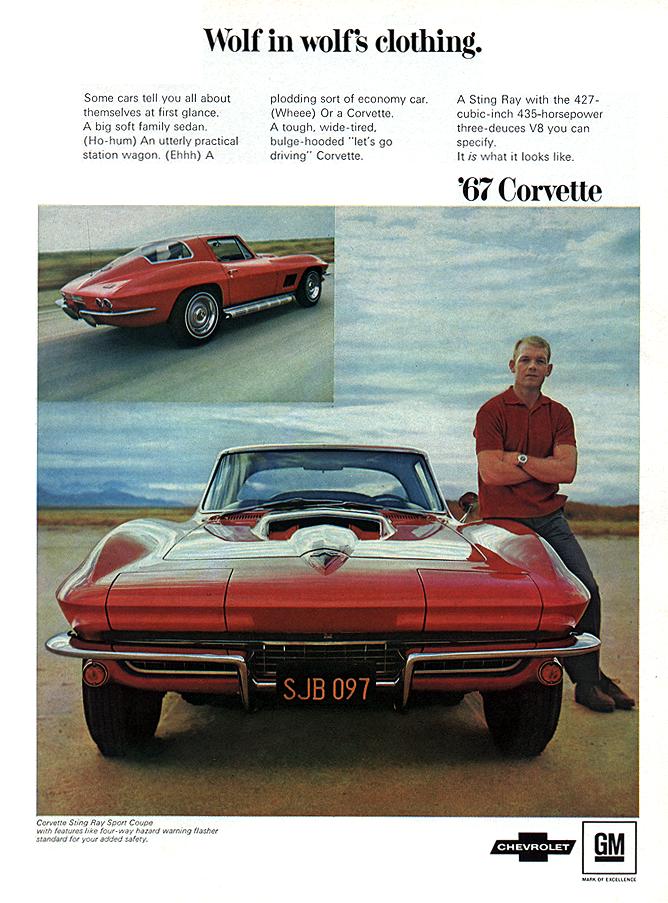 1963 Chevrolet? Corvette Ad (Source: OldCarAdvertising.com)
1963 Chevrolet? Corvette Ad (Source: OldCarAdvertising.com)held to the same timetable, so the unveiling of the new cars was a major event. To add perspective for those too young to remember, each year every car was tweaked and changed and the public couldn’t wait to see what was new for the upcoming new models and changes. It was a time when the styles were significantly different from one manufacturer to another. So every fall we waited in anticipation for the changes each manufacturer would make. Those of us addicted to Detroit’s four-wheel products loved to compare the old model with the new, noting the most subtle styling changes and of course, passing our expert judgment on the changes and tweaks the stylists had made.
Unlike most of Detroit’s models, which often were the recipients of significant styling changes from year to year, the Corvette annual tweaks were subtle and to most, other than real “Vetters”, almost imperceptible. So, even the smallest changes to the Corvette were debated by its fans. After all, the King was the King, so any change had to be warranted and improve the car’s looks. Sometimes even the most insignificant change would either excite or incite us.
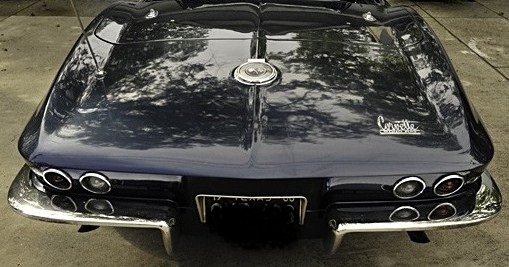 1966 Corvette Rear Lights (Source: VetteFinders)
1966 Corvette Rear Lights (Source: VetteFinders)If we look at the C2 as an example from 1963 through 1967 the major body styling went unchanged other than minor styling modifications. One modification Chevrolet made on the 1966 Corvette was changing the inside rear light on each side to a clear lens to accommodate the backup lights, which became a standard feature that year. Being the foremost sixteen year-old Corvette authority, I was incensed that they would change all red quad lights, even if it were only the color of the lens. All four of those lights were to be red! I guess the same emotion was shared by most other Corvette enthusiasts since Chevrolet changed it back to the traditional red on the 1967 model year.
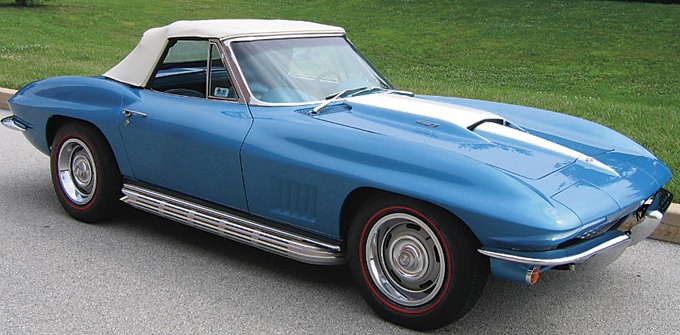 1967 Corvette New side vents and stinger hood (Source: CorvetteBlogger?)
1967 Corvette New side vents and stinger hood (Source: CorvetteBlogger?)Speaking of the 67, I gave my complete approval and a double “thumbs up” when the hood scoop was changed to the “stinger-style” and the side vents went from three to five. The point is, the analyzing the subtle annual changes allowed us to hone our abilities to be able to critically review and, of course, comment when a completely new generation of Corvette was unveiled. If the annual unveilings were excitedly anticipated, you can only imagine the over the top exhilaration when a major styling change was made and a new generation, a new dynasty of Corvette ascended to the throne.
For as far back as I can remember, I was a huge fan of the Corvette. And why not? The car embodied all of the things every adolescent boy wanted to be. It was good looking, stylish, strong, fast, well-built and it attracted girls!
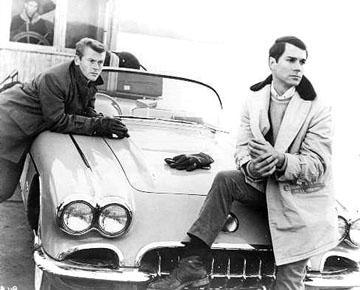 The real star of Route 66 was the Corvette
The real star of Route 66 was the CorvetteI read everything I could find on the king of cars and of course would never miss spending sixty minutes each Friday night with Todd Stiles, played by Martin Milner, and Buzz Murdoch, played by George Maharis, as they adventurously traveled Route 66, which also coincidentally was the TV series name. As far as I was concerned it didn’t matter who played who because the only real star of the show was the car, the Corvette. The plot, if there was one, didn’t matter either, it was only about the car.
One of the benefits of the show was that after the first year, Todd and Buzz always started the new season with a new model Corvette, 1960 C1 for the first season, then a 1962 for the second, the third year they got the new generation 1963 Sting Ray and the final season ended with a 1964. So each week the viewer could watch the latest model of Corvette in action. The TV show generated a lot of excitement, especially the fall of 1962 when it transitioned from the 1962 generation one car to the 1963 generation two car. Many of the series followers, like me, watched because of the car, especially to see the radical new styling of the C2. It seemed that everyone wanted to weigh in on the car’s styling and design.
I remember a lively discussion one September, Saturday morning at Ed Parks Barber Shop, among those waiting for haircuts, debating the styling of the newly introduced 1963 Corvette Sting Ray. Mr. Parks, the barber, along with two other men were convinced that the new styling would surely spell the end for the sports car (sound familiar?), it was just too radical. Keep in mind the only 1963 Corvette that Ed and his two friends had seen was on “Route 66”, the TV series, and in Corvette advertisements. Two college guys waiting their turns in the chair disagreed with Ed and the others. One of the two, his name was Mark, had actually seen a real Sting Ray. He found it in a dealership in Cincinnati, Superior Chevrolet if I recall correctly. I had considered “thumbing” a ride to a dealer just so I could memorize every line and detail of the new car, but I couldn’t find one that had a car close enough to where I lived. Okay so I was still kind of a wimp! So I hung on Mark’s every word as he described the Sebring silver coupe sitting in the showroom. I was quick to add my support of his opinion, it was the most beautiful automobile creation I had ever seen, and I was just as quickly ignored by my barber and his friends. To support his opinion, Mark added that the new car was such a success there was a three to four month wait for a new one.
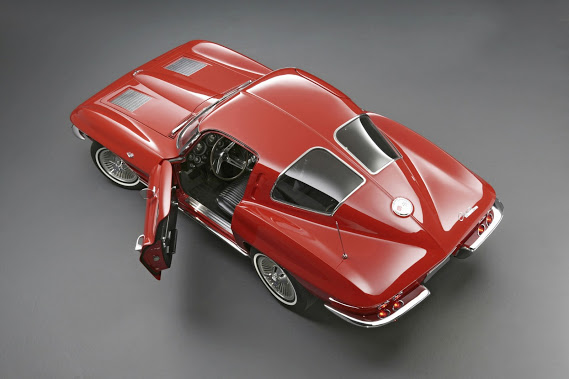 1963 Corvette? Split Window Coupe Source: GM?
1963 Corvette? Split Window Coupe Source: GM?It cost over $4000. In response the barber added that it was “foolish” to spend that kind of money on an impractical car “like that” when for a few hundred less you could buy “a real car, a fully loaded Merc Monterey Convertible”. A Mercury for God’s sake, how could anyone even refer to a Mercury in the same sentence with a Corvette, I thought!
Mark’s friend, who currently drove a tired five year old 1957 Corvette and boasted he was just two “points” away from losing his license, informed the small shop that he was saving up half the cost of a new Sting Ray and along with his trade-in could afford to finance the thousand dollar balance. I could see the disapproval in the older men’s eyes, but his plan seemed to make perfect sense to me.
There were only two things resolved in Ed Park’s barber shop that day, neither of them about the Corvette. One was the unanimous opinion that our high school football team was destined to win another, in their long line, of state championships and the second thing resolved that day was when I got to high school I wasn’t going to let Ed “the barber” touch my hair again.
The 1963 C2 proved the “barbershop experts” wrong. To say it was a huge success was an understatement, producing and selling 48% more cars than 1962, the last and largest year of the C1’s production run. Aside from the car’s initial launch, that was the first of Corvette’s successful generational launches.
By the time we got around to the Corvette’s next generation and launch it was a year filled with political and social events which could easily cast a foreboding shadow on the new C3’s introduction.
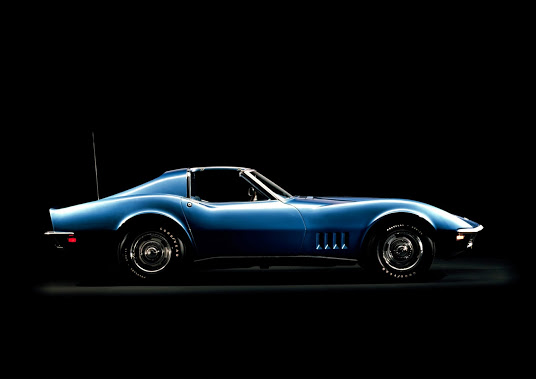 1968 Corvette? Coupe with Removable Roof (source: GM?)
1968 Corvette? Coupe with Removable Roof (source: GM?)Couple those events with the competition from inside the auto industry and the coronation of the new King appeared to be vulnerable. As was the custom, the 1968 model year cars were introduced in the fall of 1967, a year steeped in anger and protest. Just two months prior to the release of the C3, Detroit was torn apart by the angry summer riots which had set many of the major cities in the United States ablaze in protest over discrimination and lack of jobs. The violent summer of 1967 seemed to overshadow everything else, everything except the escalating Viet Nam war, the anti-war protests, and most of all, the tragic lost lives of over 15,000 American soldiers.
Political and social controversies, however, were not the only things with which the launch of the new generation of Corvette had to compete. The auto industry itself had even threatened a possible new model delay due to the almost impossible task of dealing with the Federal government’s safety and Smog standards. But an even greater threat to a successful unveiling, unlike the 1962 introduction of the C2, the new C3 had to compete with the new wave of ‘specialty’ (re: pony) and muscle cars.
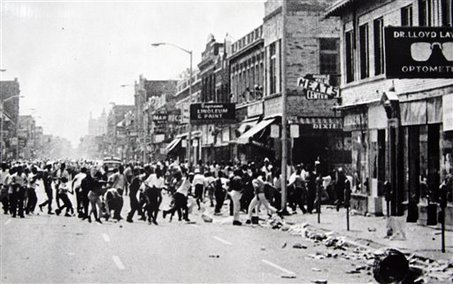 July 23, 1967 Detroit Riots West Side Source: AP)
July 23, 1967 Detroit Riots West Side Source: AP)In 1962 the new Corvette C3 had most of the American performance market to itself. But 1964 saw the introduction of the hugely popular Ford? Mustang, as well as the performance based and rebadged Pontiac Tempest turned GTO. David E. Davis, editor of Car & Driver magazine, validated the entire muscle car movement when he published an article in March of 1964 claiming the Pontiac GTO was faster than the Ferrari with the same name. Then Davis added insult to injury to Ferrari fans when he stated that Ferrari never built enough GTOs to earn the name! The muscle car and ‘specialty? car market exploded so by the time the C3 was introduced in the fall of 1967 the market was flooded with performance cars of every type. There were even some intruders into the two-seat sports car market. The Shelby Cobra the only other true American ‘sports car’ ceased production in the US in 1967, the same year the Corvette C3 was unveiled, but American Motors jumped in to the two-seat sports car market with the introduction of the AMX. If we look at the new car specialty/performance market we find there were no less than fifteen competitors to the Corvette from GM, Ford, Chrysler, and American Motors. GM, who at that time controlled over 50% of the domestic market and was bigger than the rest of the US automakers combined, fielded six performance competitors to its only sports car: Camaro, Firebird, SS396, GTO, 442 and the GS400.
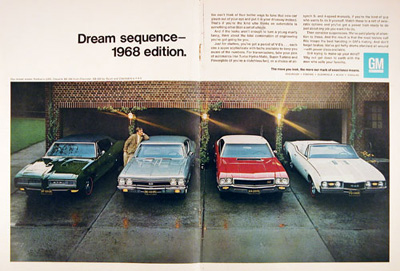 Muscle Car Competition from GM? for 1968 (Source: GM? )
Muscle Car Competition from GM? for 1968 (Source: GM? )With so many ominous events taking place throughout the country and so much competition from other performance based cars it would seem that the introduction of a new generation of Corvette would have gone almost unnoticed. Not so. Automotive magazines hailed the car’s styling, referring to it as a ?dream car?. Like the generation before, the car had a radical styling makeover. The C3’s styling, based on the Chevrolet Mako Shark II concept car and designed by Larry Shinoda, was flamboyant to say the least. Car&Driver praised it as the ?newest looking of all the 68’s? but noted that the chassis, suspension, brakes and engines were the same as offered in the 1967.
The automobile journalists praised the new body style for the ability to mount wider tires which the C2’s wheel housings wouldn’t allow. They also found the removable front part of the roof, in two sections,
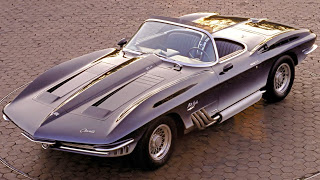 GM Mako Shark Concept Car(source carwp)
GM Mako Shark Concept Car(source carwp)to be innovative and compared it to a Porsche Targa except that “the Corvette’s is in two sections separated by a center bar.” The term “T Tops” had yet to evolve.
Unlike the introduction of the C2, I wasn’t going to miss seeing this car in person the day it hit the dealerships. By this time though, I had my own license and owned a 1962 Corvair, the closest thing I could afford to a Corvette, so I did not need to “thumb a ride” as I had considered five years before. My best friend’s girlfriend’s father owned a small Chevrolet dealership and I had heard that a larger dealership in Cincinnati was getting a new 1968 Corvette a few days prior to the introduction to the public for some public relations function. After pleading and promising her father everything from cutting his grass forever to assuring my best friend would get his daughter home on time for the rest of the year, he agreed to get the Cincinnati dealer to allow us to see the car, even though he never wanted my ransom. I think he realized that he was looking at four future customers for his small dealership.
My friends and I all had a pretty good idea of what the new car was going to look like. We knew it was to be based on the Mako Shark II concept car which had been written up in most car magazines for more than a year. In addition the car magazines had been teasing the public with spy photos for almost six months before the actual introduction. Being a devoted reader of Road & Track, Car & Driver, Hot Rod, and Motor Trend, I was pretty convinced what I would see at the dealership. The four of us piled in the car to make the trip across the Ohio river to see the car. Don, the most mechanical and technically adept of the group, talked most of the way about the engines being offered. They were carried over from the 1967 model so he had plenty of time to research them. I have to admit, he did know something about engines and performance. I mean the three of us knew a little about engines, but Don knew more, much more and even more importantly, unlike my other two friends, he understood how things worked. He owned a 1963 Oldsmobile Jetfire that had a turbocharged V8 that produced over 200 HP and Don continually worked on the car himself to keep it running. Something my other two friends were incapable of doing.
I had been partial to the “three deuce 42” in the 1967, ever since riding shotgun on two separate occasions when a friend of my family’s 427/435 1967 Corvette coupe completely smoked first a 440 GTX and then a 390 Mustang GT showing off his new White Coupe. The 427 engine had already become a legend as far as I was concerned but on the trip to Cincy my friend Don talked about a different engine. It would be the only engine he would order if he were ordering a 1968 Corvette – the L88. Why we asked would anyone want to order an engine with ten less horsepower and costs more money than the 427/435. My other two friends had never even heard of an L88 and though I had read about it.
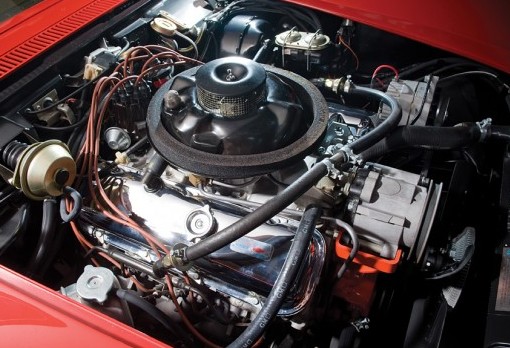 The Legendary L88 Engine (source:shiftblitz)
The Legendary L88 Engine (source:shiftblitz)I remember the three deuce set up in the white coupe was as nice to look at under the hood with the chrome air cleaner as it sounded with the optional side pipes. And though I had never seen an L88, I had seen pictures and to me it didn’t have the same aesthetic quality and according to what I had read, it had ten less horsepower. But my friend went on to say that the horsepower Chevrolet claimed was way understated and he figured it was good for more than 500HP!
We looked at Don with disbelief since there was no production car that we knew of that had 500 HP straight from the factory. Surely to get 500 HP would require modification. All of us suspected Don had slipped into one of his BS stories, for which he was famous. “Look at the compression, it’s the compression! The L88 has over 12:1 compression. It’s a 500 HP engine! You guys can take the three deuces, I’ll take the L88 and blow you off the road!” It was a couple months later that we learned everything he told us on that ride to the Chevrolet dealer about the L88 was factual. My friend, Don, knew a little about engines and performance. The rest of us, I had to admit, knew very little.
The new Corvette turned out to be every bit as beautiful as anticipated. Everything but the color, Corvette Bronze they called it. Our general consensus of the color was a more descriptive and appropriate term would have been “babysh*t brown’”. But even that term could not diminish the car and its lines. It was all we expected and actually the teaser renditions had been over exaggerated, the actual car’s lines were cleaner, more in proportion. Unfortunately the car was fitted with a 427/390 automatic, so we didn’t get to see either the three deuce 427 or the L88, but that didn’t matter, it wasn’t the car we would have ordered but the lines of the car, the styling was fabulous. It looked fast just sitting there. In addition the removable rood on the coupe eliminated the need to order a convertible. The new C3 did not disappoint, it was everything and more that a seventeen year old could ever want to drive!
And the public agreed, voting with their wallets. The 1968 Corvette sold 24.5% more than the 1967, the best selling year of the C2’s. This was clearly a testament to the public’s approval of the car. The styling was often called sexy, which seemed to fit the times in which it existed. Though it was hailed by many, for the first time during a Corvette unveiling there was also criticism, especially by those who held the C2 on such a high pedestal. Much of the criticism was aimed at the larger body size. Though the C3 was built on the same chassis as the C2 the body was seven inches longer and two inches lower. Unfortunately the 1968 car was also plagued with quality issues, most of which were worked out in the 1969 and later years. But overall the styling and introduction were considered a huge success, confirmed by the length of production, fourteen years, and the longest running off any generation. Once again the engineers and designers had produced a car that excited and thrilled the public.
In a few days a new dynasty is ready to be crowned. Today the annual new car introductions and styling updates come and go almost unnoticed. No longer does the public wait with ?bated breath? to see what the auto manufacturers are serving up. Unless you are an enthusiast you often can’t tell the difference between model years and even for some of the enthusiasts it is difficult. Only this morning I was at a “Corvettes and Caffeine” event in Scottsdale and I overheard two enthusiasts talking about my car. One of them said to the other, ?No it’s a 2005, the only way you can tell is the On Star antenna is on the roof. The Daytona Sunset Orange was a two year color only, 2005 and 2006.? So even to Corvette enthusiasts it can be difficult. But it is different when a new generation is unveiled.
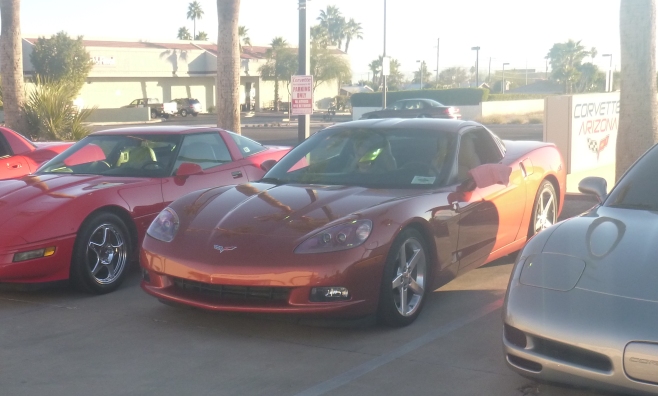 2005 Daytona Sunset Orange Metallic Corvette(source: author)
2005 Daytona Sunset Orange Metallic Corvette(source: author)When a new Corvette generation is to be anointed, not only the “Vetters”, but the world takes notice. When a new undisputed King is to be crowned and the world takes notice. The excitement and the anticipation of earlier generational unveilings comes flooding back, but as similar as it appears on the surface it isn’t quite the same, at least for some.
Hopefully over the years we have become wiser, more understanding, more intelligent, more “worldly”, though I’m not so sure the “global this” or “global that” stuff is really so much better. Many of us are in our fifth or sixth decade and the ?been there, done that? attitude has become a mantra for too many. Maybe over the years we have become more cynical. As Paul Revere and the Raiders once sung, “Kicks just keep gettin’ harder to find!” Maybe because of that we have become more skeptical, “non believers”. Maybe it’s safer to take a cynical view, to avoid another disappointment. Maybe that is why there are so many naysayers out there bashing the new Corvette before they have ever seen the real car or experienced the actual performance of the C7. According to some, the death bell is already tolling for the yet to be unveiled car. But the Corvette has an uninterrupted string of successful new generational launches. Each new generation has been an improvement over the last. So before you join the “crepe hangers”, think back for a moment. Think how much excitement and fun we had in anticipation of a new generation of Corvette. I’d venture to say that before the generation was finished most critics had become converts. And I’d also venture a guess that it will be the case with the C7. That being said, let’s put aside the cynicism, at least for a while, and enjoy the launch. Let’s try and recapture that unbridled excitement we experienced in our youths when a new generation was introduced, a new King was crowned. Let’s put the C6 to rest. Let’s allow the new King to reign, at least a while, before a coup is planned. As for me I say, “The King Is Dead, Long Live the King!”
